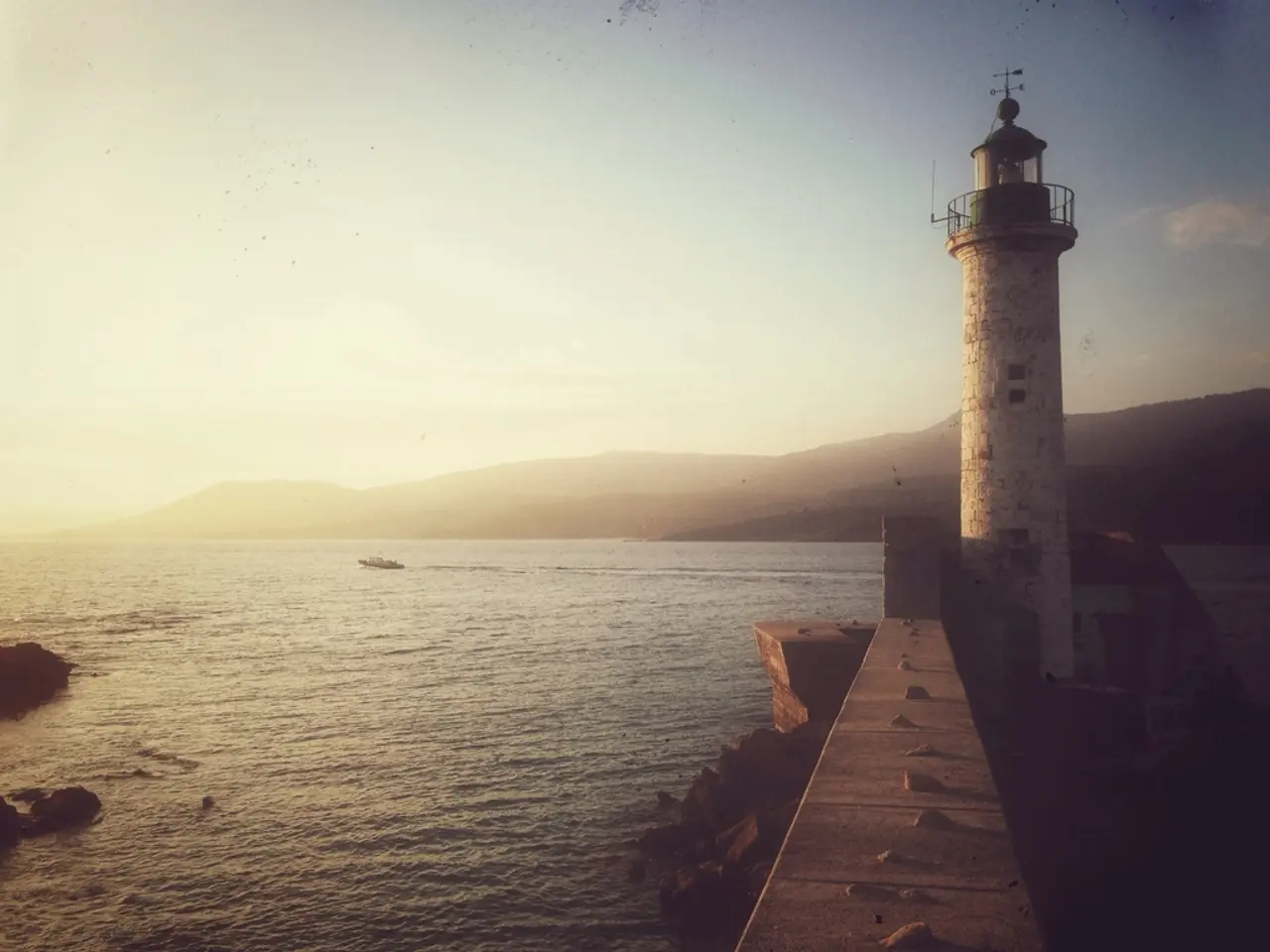Catastrophic 650-foot mega-tsunami leaves devastation worldwide - satellite imagery shows unprecedented destruction
In a groundbreaking discovery, scientists have unraveled the mystery behind the unique seismic waves generated by the September 2023 Greenland tsunami in Dickson Fjord. The event, triggered by a massive landslide, has shed light on how extreme local geological events can have global implications.
On September 16, 2023, a mega-tsunami occurred in Greenland's Dickson Fjord, caused by the collapse of 25 million cubic yards of rock and ice. The immediate effects were felt at a research station on Ella Island, where equipment worth $200,000 was damaged.
The tsunami triggered seiche waves — standing waves oscillating within the fjord. These waves, persisting for over a week, generated seismic signals that were strong enough to be detected globally, traveling as far as 5,000 kilometers around the Earth and lasting over a week. This prolonged reverberation of waves acting like a “sloshing motion” inside the fjord is what caused the distinct, long-duration seismic signals captured by monitoring stations worldwide.
Alice Gabriel from UC San Diego's Scripps Institution of Oceanography led efforts to create a computer simulation of the long-lasting, sloshing tsunami. The simulations indicated the standing waves reached about 30 feet (9.14 m) in height, though there were discrepancies among the researchers about the exact measurements.
The seiche effect explains the unique, prolonged seismic waves recorded from this event. The Surface Water and Ocean Topography (SWOT) satellite, launched in December 2022, played a crucial role in understanding this phenomenon. SWOT can map a 30-mile-wide swath of ocean with incredible detail, offering a comprehensive view of the tsunami's interaction with the fjord’s unique topography. The satellite provided high-resolution images of the Dickson Fjord after the tsunami.
More than 70 researchers from various global institutions were involved in analyzing the unique seismic signal. The seismic waves from the Greenland tsunami exhibited smooth, rhythmic peaks spaced 92 seconds apart and persisted for nine days.
This phenomenon is notable because it shows how extreme local geological events in remote regions can produce global seismic signals through persistent water oscillations. It highlights the value of seismic monitoring for such natural hazards. As the Arctic becomes more accessible for research and tourism, authorities will need to develop more sophisticated monitoring and early-warning systems to track and respond to natural hazards like tsunamis.
Kristian Svennevig from the Geological Survey of Denmark and Greenland noted that the Greenland tsunami could be just the start of a troubling new pattern. Climate change is already reshaping the environment, contributing to increased landslide frequency in Greenland.
Thomas Monahan from Oxford University emphasized the importance of next-generation Earth observation satellites like SWOT. The full study was published in the journals Science and Nature Communications.
- The global seismic signals caused by the Greenland tsunami are an indication of how medical-condition-like symptoms, such as the persistent sloshing motion in the fjord, can be a result of climate-change-induced environmental-science phenomena, like increased landslide frequency in Greenland.
- As the Arctic becomes increasingly relevant to health-and-wellness fields like research and tourism, understanding the seiche effects and the global implications of local geological events, similar to the Greenland tsunami, through advanced seismic monitoring and Earth observation satellites like SWOT becomes crucial for predicting and mitigating natural hazards like tsunamis.




